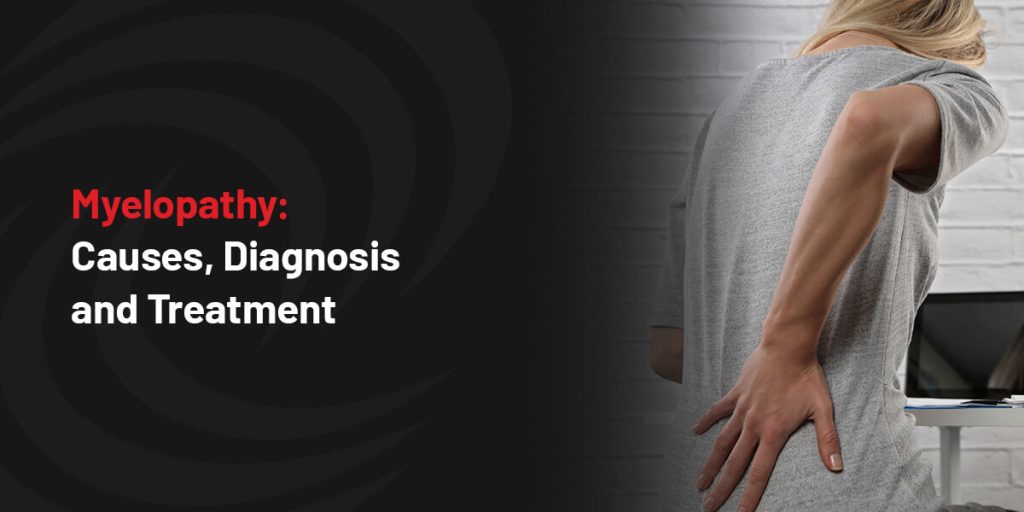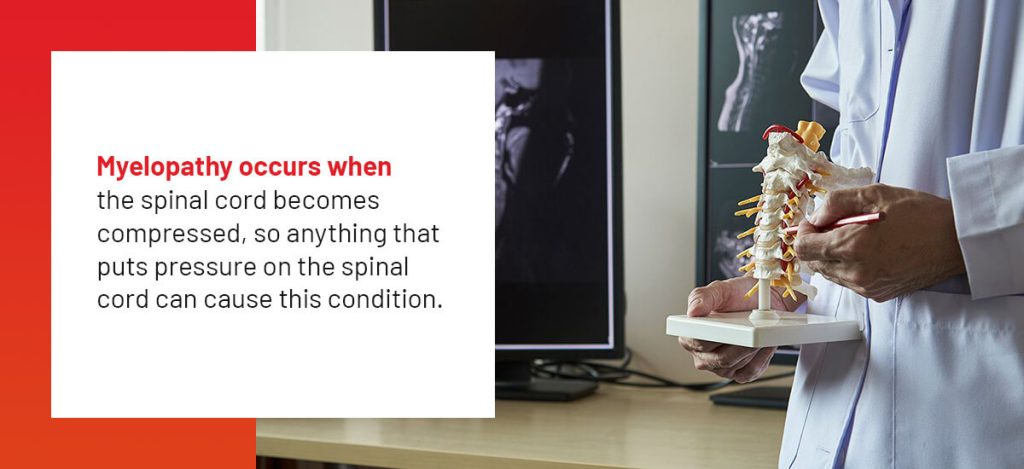
Spinal injuries can wreak havoc on your life, impacting your organs, motor functions or senses. They must be handled with prompt medical attention to prevent lasting damage. Speak with your doctor if you notice any peculiar symptoms, such as those caused by myelopathy.
Myelopathy is a common spinal cord condition that can limit a person’s function and mobility. The condition can take a toll on a person’s physical and mental health when left untreated, so prompt intervention is critical. Understanding the condition and the treatments available can help you better navigate a diagnosis.
Myelopathy refers to severe spinal cord compression, which can have different causes. A compressed spinal cord can limit or alter function, resulting in pain, poor motor function or numbness. The nerves within the compressed area can also be at risk of long-term damage without prompt treatment. Different types of myelopathy, such as cervical myelopathy and spinal myelopathy, affect different areas of the spine.
Pain in the neck or back is the primary symptom of myelopathy since spinal cord compression puts pressure on nerves. Pain is enough to limit a person’s daily activities or their involvement in life. However, other notable symptoms of myelopathy include:
These symptoms can make it challenging or impossible for a person to live a well-rounded life. The pain and loss of motor functions reduce how much activity a person can do, which can limit job opportunities, social outings and other activities or responsibilities.

Myelopathy occurs when the spinal cord becomes compressed, so anything that puts pressure on the spinal cord can cause this condition. People can develop an acute form of the condition from accidents or infections, such as:
While acute myelopathy is possible, most people develop the condition slowly over time due to other spinal conditions or regular wear and tear. Some spinal conditions that can cause myelopathy include:
Other conditions unrelated to the spine can also cause myelopathy, including autoimmune conditions, inflammatory diseases or radiation treatment.
Myelopathy can affect anyone, but it is more likely to occur in older people, as people of a certain age are likelier to have weak bones. These individuals also have a higher chance of developing a spinal condition that turns into myelopathy because many of the conditions above generally happen later in life. Despite this, people of any age should have their symptoms evaluated if they believe they’ve developed myelopathy.
The symptoms of myelopathy can overlap with other conditions, including some of the spinal conditions mentioned above. In some cases, myelopathy symptoms have been mistaken and misdiagnosed as another condition. It’s essential to seek a diagnosis from a spinal specialist who knows what to look for so they can make a proper diagnosis.
A myelopathy diagnosis involves plenty of testing to identify spinal cord compression. Some of the different tests that are used for a myelopathy diagnosis include:
Myelopathy treatment is critical to prevent permanent nerve damage and improve overall quality of life. Without treatment, myelopathy can result in permanent nerve damage. Your spine specialist will walk you through different treatment options, from surgery to steroid injections.
The earlier you can catch myelopathy, the better your outcome. Early intervention can prevent severe nerve damage that would be extremely challenging or impossible to reverse. Treatment can also help you get back to the activity you once enjoyed. Treatment for myelopathy can either be non-surgical or surgical, depending on the patient and the progression of their condition.
If your doctor has diagnosed you with a mild form of myelopathy, you’ll likely only need non-surgical treatment to improve your condition and quality of life. Non-surgical treatment is usually also tried before invasive surgeries. Some non-surgical treatments your doctor may have you try include:
It’s essential to note that non-surgical treatments won’t fix your spinal cord compression, and the condition will gradually progress, though some people only experience acute myelopathy. Instead, non-surgical treatment is meant to help improve your quality of life by reducing symptoms.
Surgery is often used in myelopathy patients who aren’t finding any success in managing their symptoms through non-surgical methods. Once the condition has progressed far enough, surgical intervention may be the only treatment option available to help improve quality of life.
Surgery will involve spinal cord decompression, which helps take pressure off the spinal cord. Surgery for myelopathy may also remove herniated discs or bone spurs that could be causing myelopathy to progress. For myelopathy caused by more advanced or serious spinal conditions, such as spinal stenosis, other surgeries may be recommended — for example, laminoplasty helps widen the space in the spinal cord to relieve compression.
You can also find minimally invasive spine surgery options depending on the specifics of your condition, which could be an excellent way to find relief without the potential for as many complications or a long recovery. While you wait for surgery, your doctor will recommend making lifestyle changes and other non-surgical treatments to help your symptoms.
Untreated myelopathy can significantly impact a person’s quality of life. The Desert Institute for Spine Care (DISC) understands how challenging it can be to live with myelopathy, so we’ve dedicated a team of experienced surgeons to help you manage your symptoms.
Our team of surgeons has a long history of providing cutting-edge surgical options for various spinal conditions, including myelopathy and spinal conditions that could cause the condition to develop. We can help you find solutions to manage your pain and slow the progression of your condition. Our team will also help you manage your post-operation recovery, which includes any additional treatments, such as medication or physical therapy.
Get in touch with our experienced team today to request an appointment and start your path to healing.
